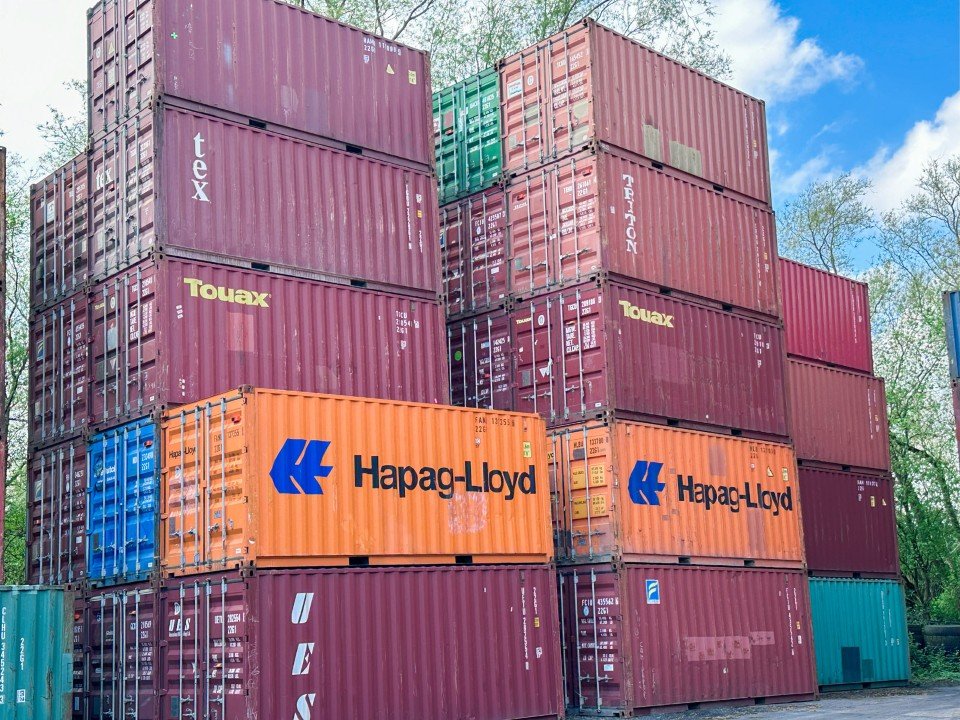
Practical Tips for a Cooler Shipping Container
-
Install Ventilation Systems
Proper ventilation is key. Vents at both ends of the container allow hot air to escape and cooler air to circulate. Choose from louvre vents for adjustable airflow, fixed vents for simplicity, or rooftop turbine vents for continuous ventilation.
-
Apply Heat-Reflective Paint
The roof absorbs most of the sun’s heat. Painting the roof with light-coloured, reflective paint can significantly reduce heat absorption, helping to maintain a cooler internal temperature.
-
Install Insulation
Investing in quality insulation, such as spray foam, rigid board, or fibreglass, helps regulate internal temperatures. While it reduces internal space slightly, it provides year-round benefits, keeping the container cooler in summer and warmer in winter.
-
Use Air Conditioning Units
For maximum cooling, install a portable or commercial HVAC unit. Ensure your container has a reliable power source and choose a unit sized appropriately for the container’s dimensions and local climate conditions.
-
Utilise Dehumidifiers
A dehumidifier helps control humidity levels inside the container, reducing the risk of condensation and moisture build-up, which can worsen heat retention and damage contents.
-
Keep Container Doors Properly Maintained
Check and maintain door seals, gaskets, and hinges regularly. Well-sealed doors prevent hot air and moisture from entering the container. Lubricate moving parts and replace damaged seals promptly to ensure an airtight closure.
-
Position Your Container in the Shade
Where possible, place your container under natural shade, such as trees or beside a building. Reducing direct sunlight exposure is one of the simplest ways to control internal temperatures naturally.
-
Elevate the Container
Position the container on concrete blocks or pressure-treated wood to elevate it slightly. This encourages airflow underneath the container, reducing heat build-up and preventing moisture accumulation.
-
Install an External Shade Structure
If natural shade isn't available, consider building an external canopy, pergola, or shade cloth over the container. This barrier will prevent the sun’s rays from directly hitting the surface, further cooling the interior.
-
Limit Heat-Generating Activities Inside
If you use your container as a workshop or office, avoid activities that produce heat during peak temperatures. Operating machinery, cooking, or even lighting inside during the hottest parts of the day can significantly increase internal heat levels.
Final Thoughts
By following these ten effective methods, you can dramatically reduce the internal temperature of your shipping container, protecting your goods and ensuring a safer environment. Planning before summer's peak can save you from costly damage and inconvenience.
Frequently Asked Questions
Do shipping containers get very hot in summer?
Yes, shipping containers can become extremely hot due to their steel structure absorbing heat. Without cooling measures, interior temperatures can significantly exceed outdoor temperatures.
What is the best insulation for a shipping container?
Spray foam insulation is often considered the best option due to its excellent thermal performance and ability to seal gaps, although rigid board and fibreglass are also effective.
Is it necessary to install both vents and insulation?
Combining vents with insulation provides the most effective temperature control, allowing airflow while reducing heat absorption.
Can I paint my container roof myself?
Yes, painting your container roof with reflective paint is a straightforward DIY project. However, for best results, ensure the surface is cleaned and primed properly before application.
How much does installing an HVAC system in a container cost?
Costs vary depending on unit size and power requirements, but for a typical 20ft container, installation costs can range from £800 to £2,500 for basic systems.
Buy Shipping Containers
Hire Shipping Containers
Services
Areas Served
At Shipping Containers of Southampton, we serve locations across the South of England. Our hiab delivery coverage includes Reading, Portsmouth, Swindon, Basingstoke, Guildford, Maidenhead, Camberley, Eastbourne, Eastleigh, Bracknell, Bournemouth, Brighton, Slough, Crawley, Farnborough, Weybridge, Aldershot, and Chichester. Whether you need a new or used container, we offer prompt delivery and competitive pricing.
